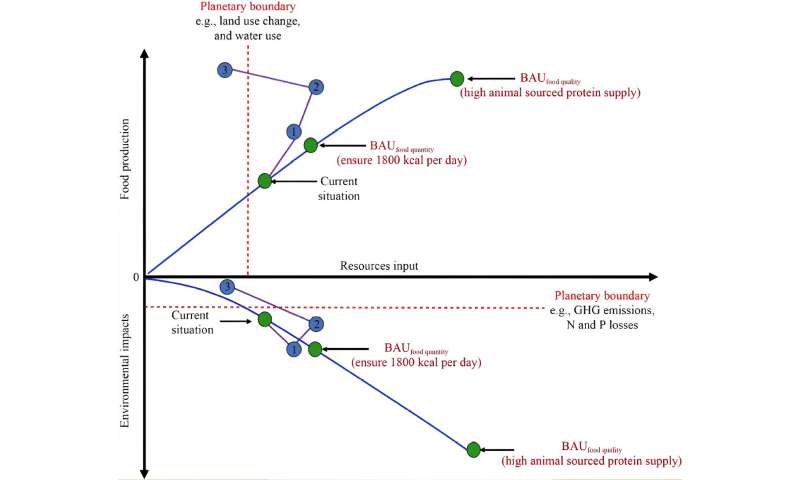Addressing sustainable food systems: Global initiatives and innovations

Contemporary food systems were originally developed to tackle challenges of the mid-20th century, aiming to supply abundant, efficient, non-perishable starchy calories to accommodate the expanding global population. Although substantial progress has been made in global food security over the past several decades, there still exist large populations experiencing hunger worldwide.
Currently, global hunger primarily refers to insufficient calorie intake. Hidden hunger is the presence of multiple micronutrient in the absence of an energy-deficit diet. Hidden hunger, particularly the inadequate consumption of high-quality protein, has resulted in significant but often unnoticed health consequences.
Resolving the hidden hunger for people is the central to meeting the UN SDGs, especially for SDG2. The global food system is at a critical juncture, facing a confluence of challenges and opportunities that demand a profound transformation. Transforming the food system can improve access to nutritious and affordable food for vulnerable populations and enhance global food security.
Prof. Lin Ma from Nanjing University and his team proposed a three-step approach to transform the food system by integrating various novel technologies. The primary task at the current global stage is to address the issue of hunger. The study has been published in the Journal of Frontiers of Agricultural Science and Engineering.
The first step should focus on addressing people's calorie needs, which are essential for achieving the SDG Zero Hunger goal. While addressing calorie requirements, efforts should couple crop and livestock cycles to reduce environmental pollution caused during the food production process.
The second step should consider people's demand for high-quality protein, enabling the transition from simply eating enough to eating well. At this stage, emission reduction technologies should be introduced to reduce environmental pollution during the food production process.
The third step is to enhance global food production efficiency and environmental sustainability, ensuring that natural resource consumption and environmental emissions associated with food production remain within planetary boundaries.
In the first step, a potential pathway provided to improve the production of crop system and livestock system. For crop system, based on various limited factors of each country such as soil fertility, arable areas, and irrigation capabilities, a quantitative analysis is conducted to determine the maximum yield potential and efficiency potential of crops in each country.
Subsequently, in conjunction with the relevant policy guidelines related to food production in each country, corresponding technical optimization such as seed breeding, field reclamation and better management practice are recommended to increase crop yield.
For livestock system, each country should enhance meat production by optimizing feeding structure and high production performance livestock breeds to improve feed conversion rates. In term of environment, coupled crop and livestock system can be recommended for reducing environmental pollution and advancing agricultural green development.
In the second step, reducing regular food consumption and using alternative novel food source have been recognized as efficient strategies for resolving hidden hunger and reducing environmental impacts. Novel foods encompass a wide range of innovations, including insect-based products, algae, aquatic products, and lab-grown meats. The adoption of novel foods can meet the high protein food demand and alleviate the pressure on natural ecosystems.
In the third step, this study proposes optimization global trade and spatial planning techniques to further enhance food production and environmental efficiency, ensuring the achievement of both global SDG goals and AGD objectives. Firstly, this step is to establish classification criteria for various countries around world, including food production efficiency, environmental thresholds and natural resource constraints.
Then, countries are categorized globally into high food production efficiency and low food production efficiency based on established classification criteria. Additionally, countries are classified in terms of their environmental impact, distinguishing between high-pollution and low-pollution nations.
In the end, it should encourage high food production efficiency counties to maximize food production within the limits of environmental and natural resource thresholds and export to countries with low food production efficiency, thereby enhancing global resource efficiency.
This study can help counties to formulate corresponding policies and actively promote the transformation of the food system to achieve agricultural green and sustainable development.
More information:
Xiangwen Fan et al, Toward sustainable food systems: global initiatives and innovations, Frontiers of Agricultural Science and Engineering (2024). DOI: 10.15302/J-FASE-2024544
Provided by Higher Education Press